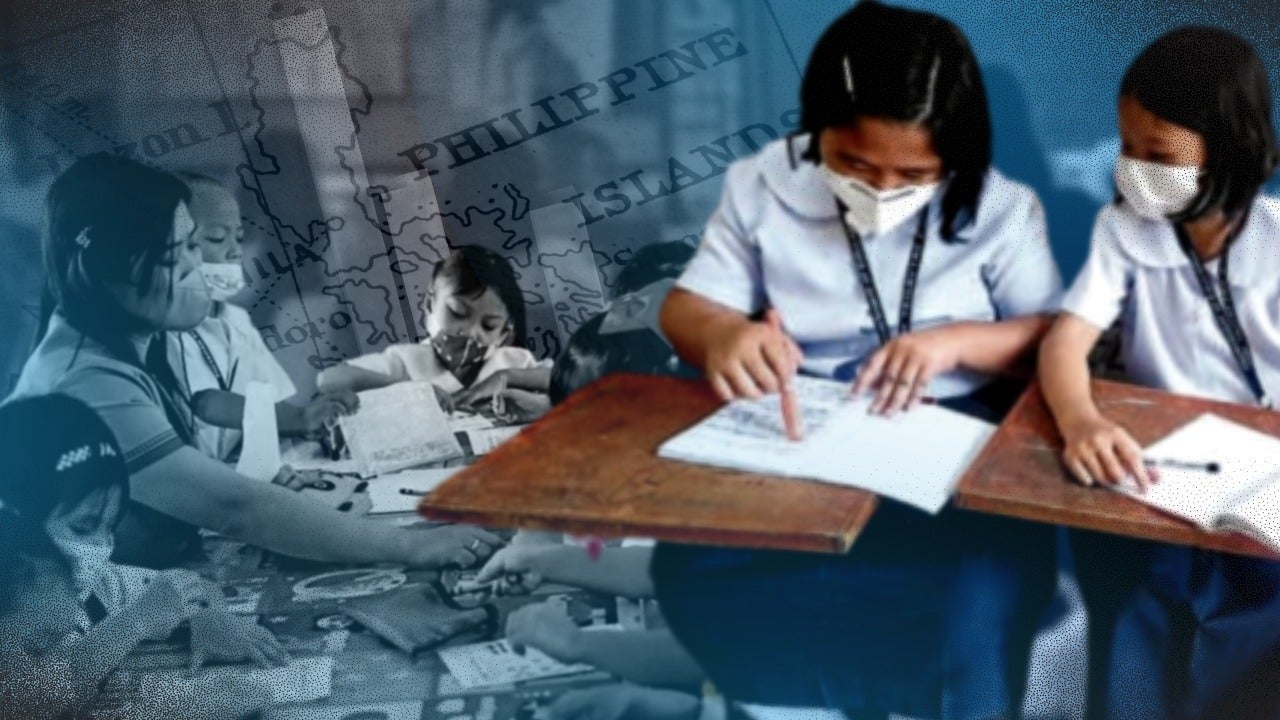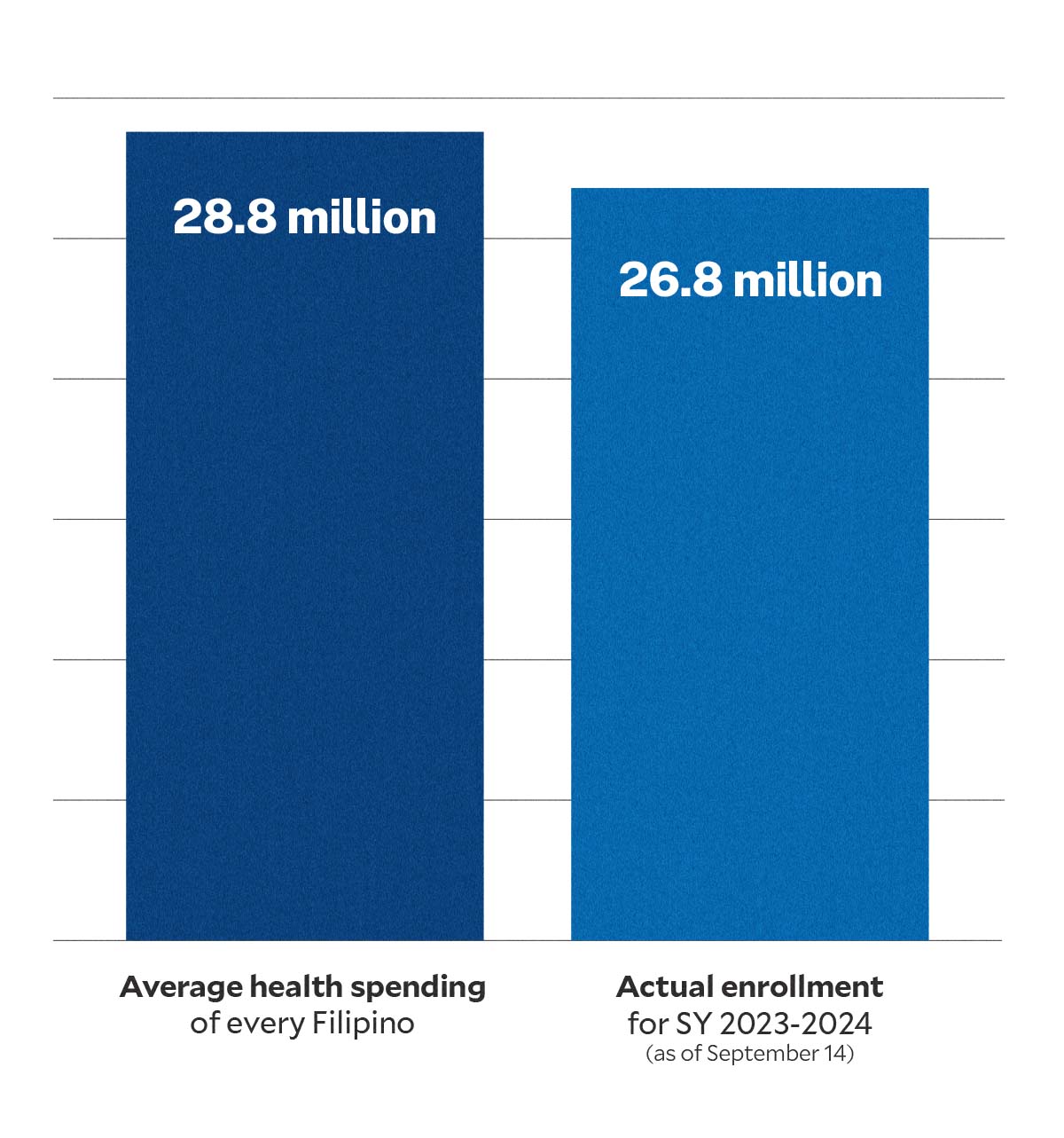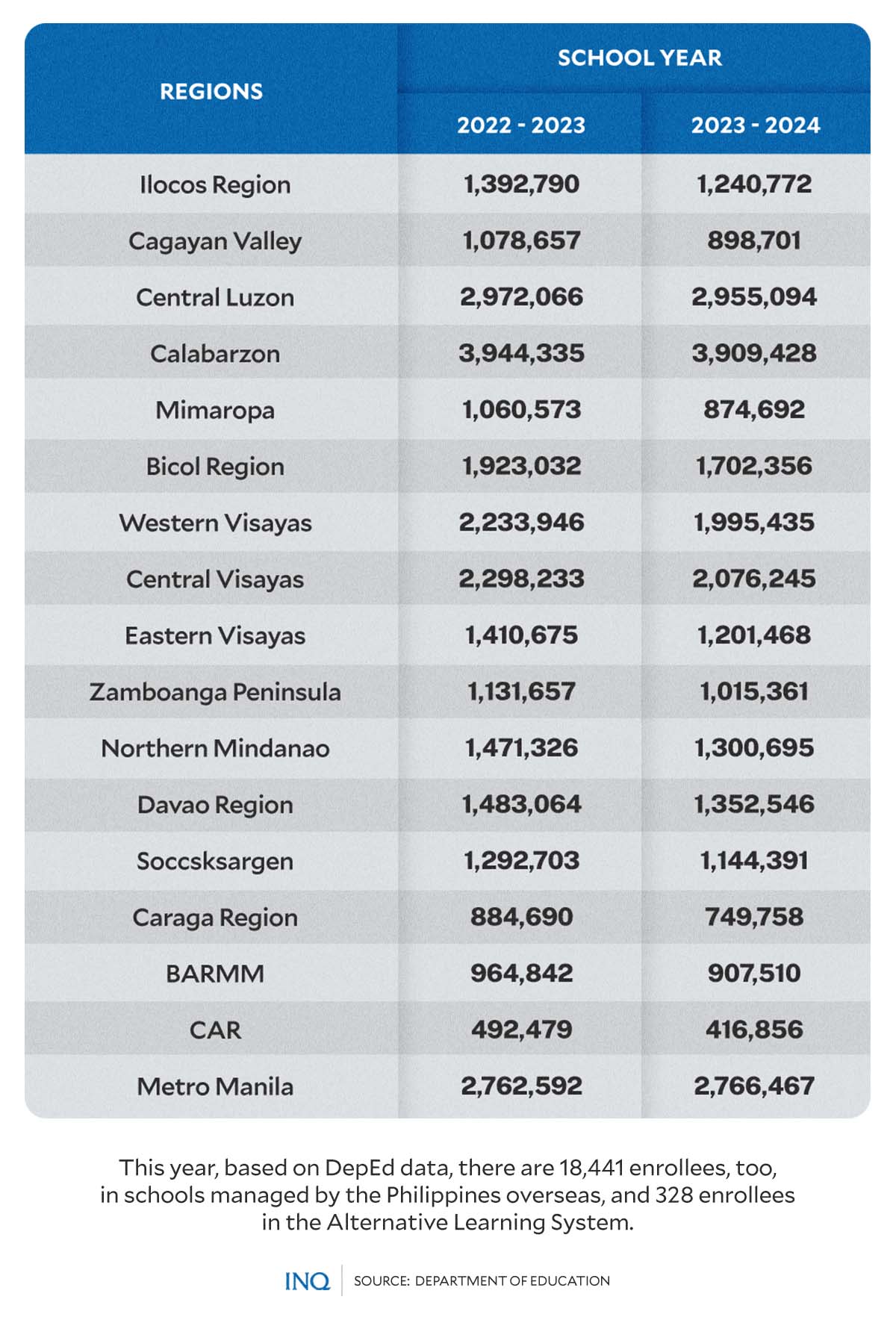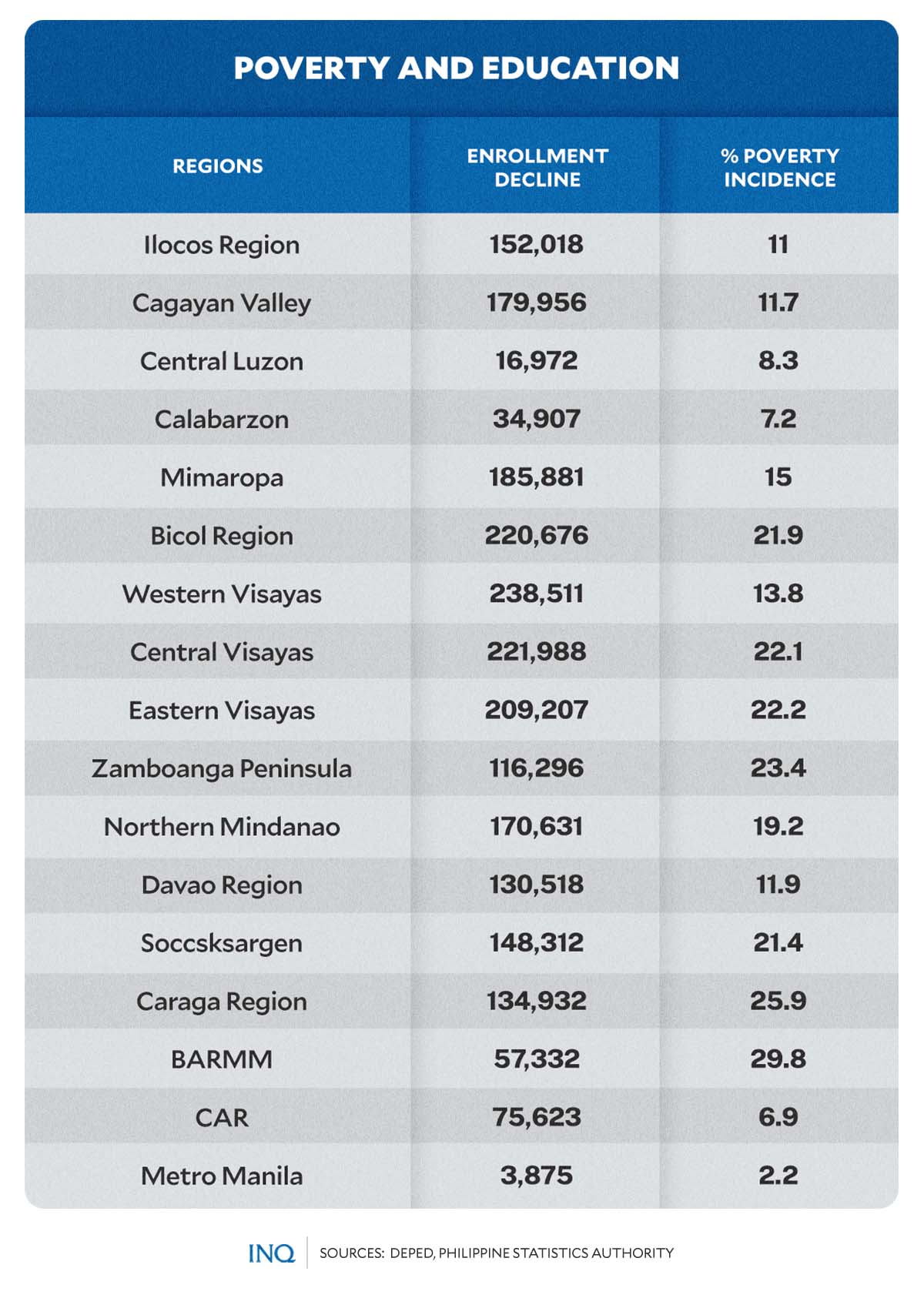Poverty’s toll draws focus as enrollment numbers fall
MANILA, Philippines—Classes started on Aug. 29, but almost a month later, the number of enrollees is still 1.9 million short of the Department of Education’s (DepEd) target of 28.8 million students for School Year (SY) 2023-2024.
According to latest DepEd data, there are already 26.91 million students enrolled in public schools, private schools, and state and local universities and colleges as of Sept. 15, slightly higher than the 26.85 million on Sept. 14.
Last year, there were 28.4 million students enrolled across the country.
The DepEd pointed out, however, that an accurate determination of whether enrollment numbers have dropped compared to previous years cannot be made at this time because “the encoding of learners in our Learning Information System (LIS) is still ongoing.”
RELATED STORY: Unicef: Many children drop out as in-person classes reopen
Article continues after this advertisementAssistant Education Secretary Francis Bringas earlier said “once 100 percent of schools have reported, it (enrollment) will close and we will have the official number for this school year,” expressing confidence that the DepEd is on course to reach its target.
Article continues after this advertisementBut in the previous year, as of Aug. 23, or only a day since the start of classes, there were already 28.80 million enrollees, higher than the 27.23 million in SY 2021-2022 and 26.2 million in SY 2020-2021.
RELATED STORY: DepEd records 5-million drop in number of enrollees for SY 2023-24
Raymond Basilio, secretary general of the Alliance of Concerned Teachers, said “with the continuing economic crisis that we are facing, which caused increases in the prices of basic commodities and services, many Filipinos find it hard to send their children to school.”
Data from DepEd on Sept. 14 showed that out of the 17 regions in the Philippines, only Metro Manila saw an increase in enrollment—from 2.76 million to 2.77 million. Western Visayas has the biggest drop—from 2.23 million to almost 2 million.
The DepEd said schools would still be accepting enrollees until the end of September.
According to Rep. France Castro (ACT Teachers), “we cannot allow any child to be left behind.” As Bringas said, some students may have decided not to enroll this year, but stressed that the DepEd will provide them with alternatives.
Persistent in years
While the DepEd said schools are still reporting to the LIS, Basilio said Vice President and Education Secretary Sara Duterte “should start taking classes on accountability and understand that it is her who is at the helm of power.”
RELATED STORY: DepEd issues list of schools that will pilot test ‘Matatag’ curriculum
“It is her who could do multiple programs to keep the children in schools,” he said, stressing that expenses expected from the proposed institutionalization of blended learning to address the lack of classrooms can exacerbate the struggles of Filipino households.
According to the group Save the Children, there are a lot of explanations why some children leave school. “Poverty, however, is one of the top reasons. When you are made to choose between food and education, it might be hard to prioritize the latter,” the group said.
It said “a family, after all, has to eat to survive.”
Based on Philippine Statistics Authority (PSA) data, Western Visayas had a poverty incidence of 13.8 percent in 2021, while Metro Manila, the only region with a rise in enrollment numbers, had a poverty rate of 2.2 percent.
Over a decade ago, the Philippine Institute for Development Studies (PIDS) said DepEd’s Basic Education Information System suggested that only 88 percent of primary-age children and 60 percent of secondary-age children were in primary and secondary schools.
Rooted in poverty
As stated in a policy note by the PIDS, a lot of factors may be hypothesized as contributing to the lack of school participation, but poverty is on top as school attendance is lower among children of poor families, based on the Annual Poverty Indicator Survey (APIS) in 2008.
Written by Albert et. al., the paper pointed out that “children from poor families, especially in the secondary school age, may be expected to contribute to family income and often, these children have to sacrifice their schooling when they get into child labor.”
Based on both the 2008 APIS and Functional Literacy, Education and Mass Media Survey (FLEMMS), the main reasons primary-age children are not in school are: (a) the children are thought to be too young; (b) the child lacks personal interest; and (c) cost of schooling.
On secondary-age children, almost half were reported to lack interest (47.3 percent in APIS and 44.6 percent in FLEMMS), while one in four, or 24.9 percent in APIS and 44.6 percent in FLEMMS, is not in school because of cost issues.
The PIDS said one in 10 children is already employed, while one in 20 tackled school accessibility.
It stressed, however, that there are factors that may have contributed to lack of interest such as “the lack of parental support, low quality of schools available, accessibility of schools, and the need to contribute to family income (Caoli-Rodriguez 2007; Maligalig and Albert 2008).”
“The term ‘lack of personal interest’ could also be a catch-all reason that includes the lack of household financial resources which some respondents may not want to admit as the reason for not attending school (Maligalig and Albert 2008),” PIDS said.
Serious problem
The PIDS had said in the policy brief “The Filipino Child” that “dropout is a problem for many reasons,” saying in 2010 that “from the efficiency perspective, dropout is a concern in at least two dimensions”:
- The aggregate economy level wherein education is known to be an important determinant of economic growth and premature dropout means loss of potential productivity.
- Within the education sector, dropout raises the cost of achieving a targeted proportion of the population having some level of schooling (Hanushek, Lavy, and Hitomi 2006).
In the equity perspective, it said dropouts may appear small in number but they are prevalent among the poor “which thereupon turns the wheels of intergenerational transmission of poverty against them.”
“Dropping out of school will mean consigning one to a future of low-income trajectory,” said the PIDS study.
“Given a choice, one will obviously not opt for this. However, we see a considerable number of school-aged children who are not in school and most probably, it is not of their own choice,” it said.
It said “given the preponderance of economic reasons for dropping out, sustained and inclusive economic growth would be the long-term solution.”
RELATED STORY: After two years, DBM grants P11.6B for 2021 teacher bonuses



